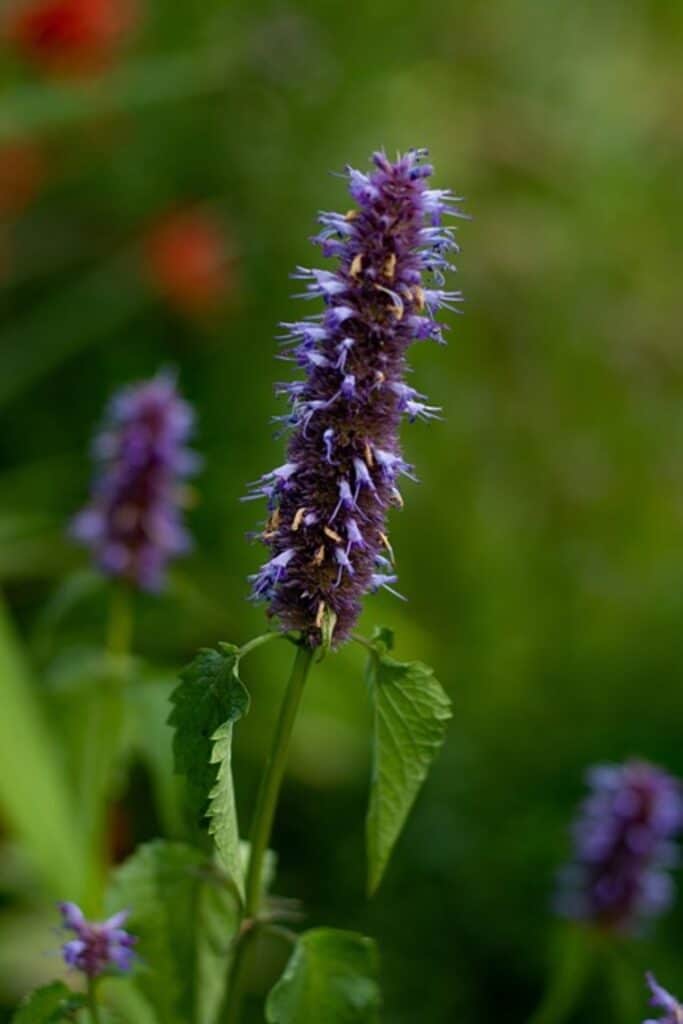The anise hyssop is almost always mistaken for two particular plants: the star anise plant or the hyssop flower. It is widely used in the ornamental, culinary, and medicinal industries. Plus, the mystery behind how this flower got its name is hidden between its interesting meaning and symbolism.
For example, a white or blue anise hyssop flower means cleanliness or patience. Meanwhile, a pink or purple one symbolizes beauty or simplicity. A yellow anise hyssop flower represents happiness.
Growing Anise Hyssop flowers are best for home vegetable and herb or flower gardens. It is highly attractive for honey bees and many other pollinators.
History of the Anise Hyssop Plant
The anise hyssop was first noted for the wonderful scent and beautiful flowers. It is commonly mistaken for the hyssop (Hyssopus officinalis). It was described in 1857 as a perennial herbaceous plant that grows up to 4 feet tall with bright and unscented double lipped flowers but fragrant leaves.
What’s amazing about this plant is that its leaves smell similarly like fennel, basil, or french tarragon! This special herby plant is a member of the mint family or the Lamiaceae family and belongs to the Agastache genus.
It has 20 other species that are mostly native to North America such as Canada, some regions of the United States, China, and Japan. The genus name Agastache comes from the Greek words Ágan and Stachys meaning very much like the ears of Wheat!
Anise Hyssops takes its common name from the aromatic nature of not only the leaves but also the seeds! It is also commonly called the Blue Giant hyssop, Fragrant Giant hyssop, Licorice Plant, and Lavender Giant hyssop.
Some of the popular species name of this herb include the Anise hyssop (Agastache foeniculum), the Korean Mint (Agastache rugosa), the Mexican Giant hyssop (Agastache mexicana), and the Purple Giant hyssop (Agastache scrophulariifolia).
Although this is a short lived plant, the anise hyssop thrives in dry conditions with full sun or partial shade areas.
Anise Hyssop Symbolism
The amazing symbolism of Agastache blossoms is all thanks to how it smells like spices – most especially smelling like Anise and Licorice!
In a religious and spiritual sense, these flowers symbolize dedicated sacrifice and the purity of these actions done.

Meaning of Anise Hyssop Flowers
In the language of flowers, Agastache flowers have a very special meaning. It is known as a charm against evil forces and negative energies. It conveys the meaning of protection while also being a magical enchantment.
Here are the different colors of anise hyssop flowers and the meaning behind each.
What does a White Anise Hyssop Flower Mean?
White Agastache flowers have a very simple meaning. It stands for cleanliness or free of impurities.
What does a Blue Anise Hyssop Blossom Symbolize?
Blue stands for peace and calmness. For Agastache flowers, this is symbolic of patience and virtues.
What does a Pink Anise Hyssop Floret Represent?
Being modest is something flowers are least meant for because of its elegant beauty – but being modest is what a pink Agastache flower stands for.
What does a Purple Anise Hyssop Bloom Indicate?
If you are looking for a flower that indicates humility or being down to earth, then a purple Agastache blossom will mean just that.
What does a Yellow Anise Hyssop Flower Symbolize?
Agastache flowers with yellow petals are symbolic of wealth in love and happiness.
What is the Cultural Significance of an Anise Hyssop Blossom?
The cultural significance of Agastache blossoms was first enjoyed by Native Americans. They were the first to make it into herbal beverages and condiment food. Its Native American name is Wahpe’ yata’ pi referring to it as a plant with leaves to chew on.
In the 1870s, the plant was popularized by American beekeepers. Its cultivation was popularized since bees that got their nectar from its flowers produced fine quality honey with a slight Anise flavor.
What is the Biblical Meaning of an Anise Hyssop Floret?
Although the Agastache floret was not mentioned in the Bible, its look-alike the Hyssop is. Flowers with the name Hyssop were mentioned in the Holy Bible specifically in the New Testament.
According to the verse, a sponge was soaked with wine and placed on a Hyssop branch on the cross before Christ died. It was referring to the after events of the Crucifixion of Jesus. This was symbolic of His purity and sacrifice.
What is the Spiritual Influence of an Anise Hyssop Bloom?
Since it is prized as an herb, the floral essence of an Agastache flower possesses numerous spiritual powers and abilities. For one, it promotes a better understanding of spiritual truth.
It is a flower that teaches the senses to receive information more positively and open mindedly while sharing this information for others to learn and preach about it. Spreading spiritual teachings and new knowledge promotes stronger spiritual connections with others.
And most importantly, it heals the inability of those to recognize this knowledge and teaching. A more open mind and heart are created with these flowers around.
What does an Agastache Floral Tattoo Symbolize?
Although not a very common floral tattoo design, it has a very deep symbolic meaning for those who choose to display its beauty. It symbolizes passion and sacrifice to achieve goals and dreams.
Usually, goal-oriented folks have this tattooed on their body to also symbolize dedication and determination for a certain cause. It is a floral tattoo perfect for embodying one’s values and virtues.
Uses of Anise Hyssops
More often popularized as an herb rather than an ornamental but it is susceptible to powdery mildew. Agastache flowers can also make great dried floral arrangements. It also makes for a creative indoor incense or essential oil – but fresh!
The essential oils from the flowers make this plant a flower favorite for tiny pollinators unlike other plants! Such blossoms also have several culinary and medicinal benefits as herbal medicine.
For consumption, the plant’s leaves can be added to jellies or fresh salads. It could also be made into an infused tea with lemon juice that could lift spirits, strengthen the heart, and relieve a sore throat. The leaves can also be turned into a powder to cool down fever and induce perspiration.
These plants also have folkloric medicinal applications. The Native American Cree tribe included its flowers in their traditional medicinal uses. Traditional Chinese medicine also used to treat burns and chest pain with the flowers.
In ancient times, certain plants like the anise hyssop had medicinal properties used by the Chippewa tribe. They also used the flowers with elk mint to alleviate chest pains and relieve coughs and colds.
A word of warning that it’s a must to always consult a medical professional before using this plant or any part of it for medical purposes.
~ image source: depositphotos/MianHamza

